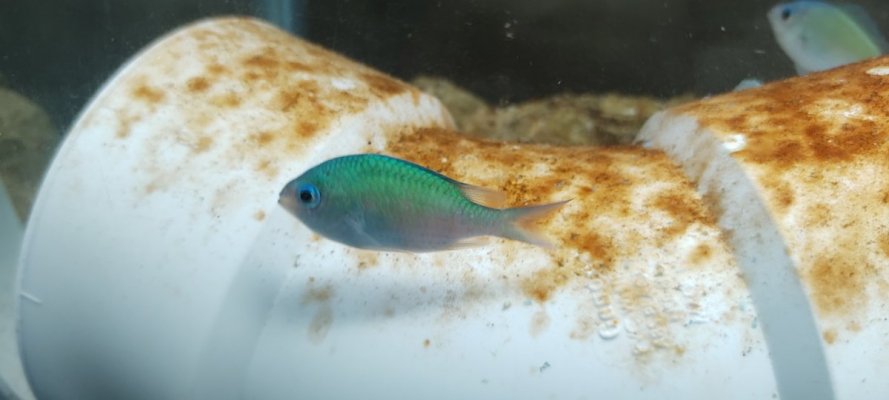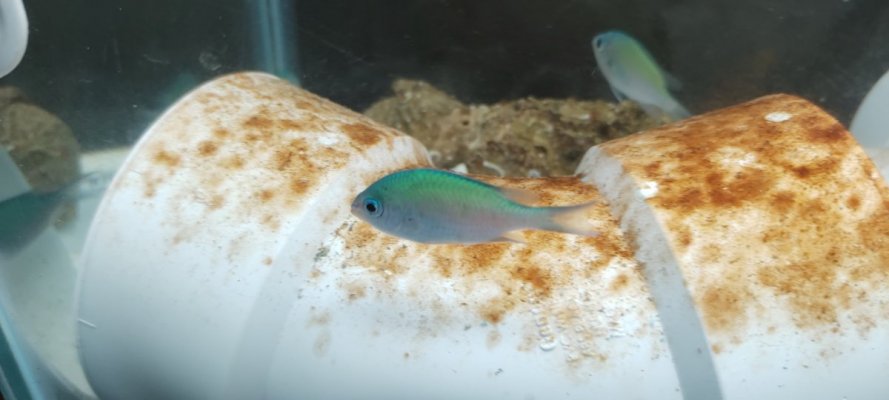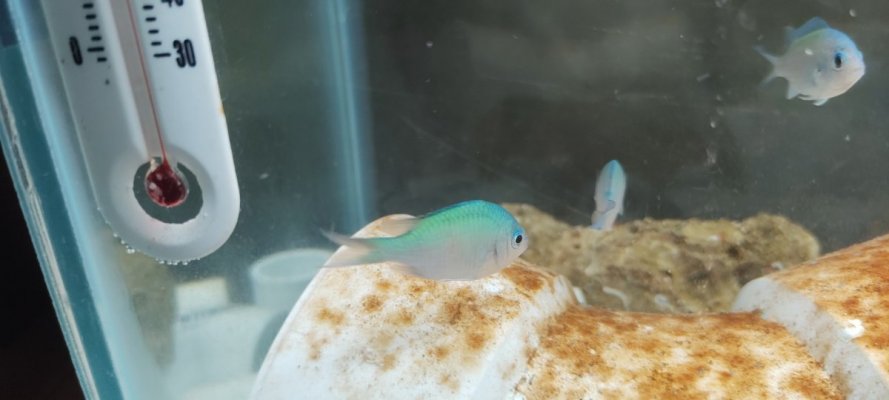- Joined
- Apr 11, 2016
- Messages
- 494
- Reaction score
- 571
So I got 7 blue green chromis 6 months ago at my local pet store. I QT them in a 10gallon. Went through ich, some kind of black ich, and some kind of bacterial infection/uronema, still dealing with maybe an internal parasite/worms. The 2 dead chromis died within 12 hours when the lesions came out 4 months ago. So its a very highly likely Uronema. Now another chromis started to developed some early lesions. Its been a month with no medication in the water/food
I already treated with copper for 1 month. Did Tank Transfer Method and Freshwater Dip.
I treated with metro soaked in the food and dosed on the water and prazi later.
They have been in quarantine for 6 months now and still going.
I can only see maybe 1 or 2 blue green chromis that is somewhat healthy.
So the questions is.
Should I try to save them or euthanize them?
Have they been all infected with uronema?
Is there a cure for uronema?
Do i risk infecting my other blue green chromis in my main display if I add only the healthy ones?
Give them away for free with a disclaimer?
What do you think?
I already treated with copper for 1 month. Did Tank Transfer Method and Freshwater Dip.
I treated with metro soaked in the food and dosed on the water and prazi later.
They have been in quarantine for 6 months now and still going.
I can only see maybe 1 or 2 blue green chromis that is somewhat healthy.
So the questions is.
Should I try to save them or euthanize them?
Have they been all infected with uronema?
Is there a cure for uronema?
Do i risk infecting my other blue green chromis in my main display if I add only the healthy ones?
Give them away for free with a disclaimer?
What do you think?
Last edited:





















